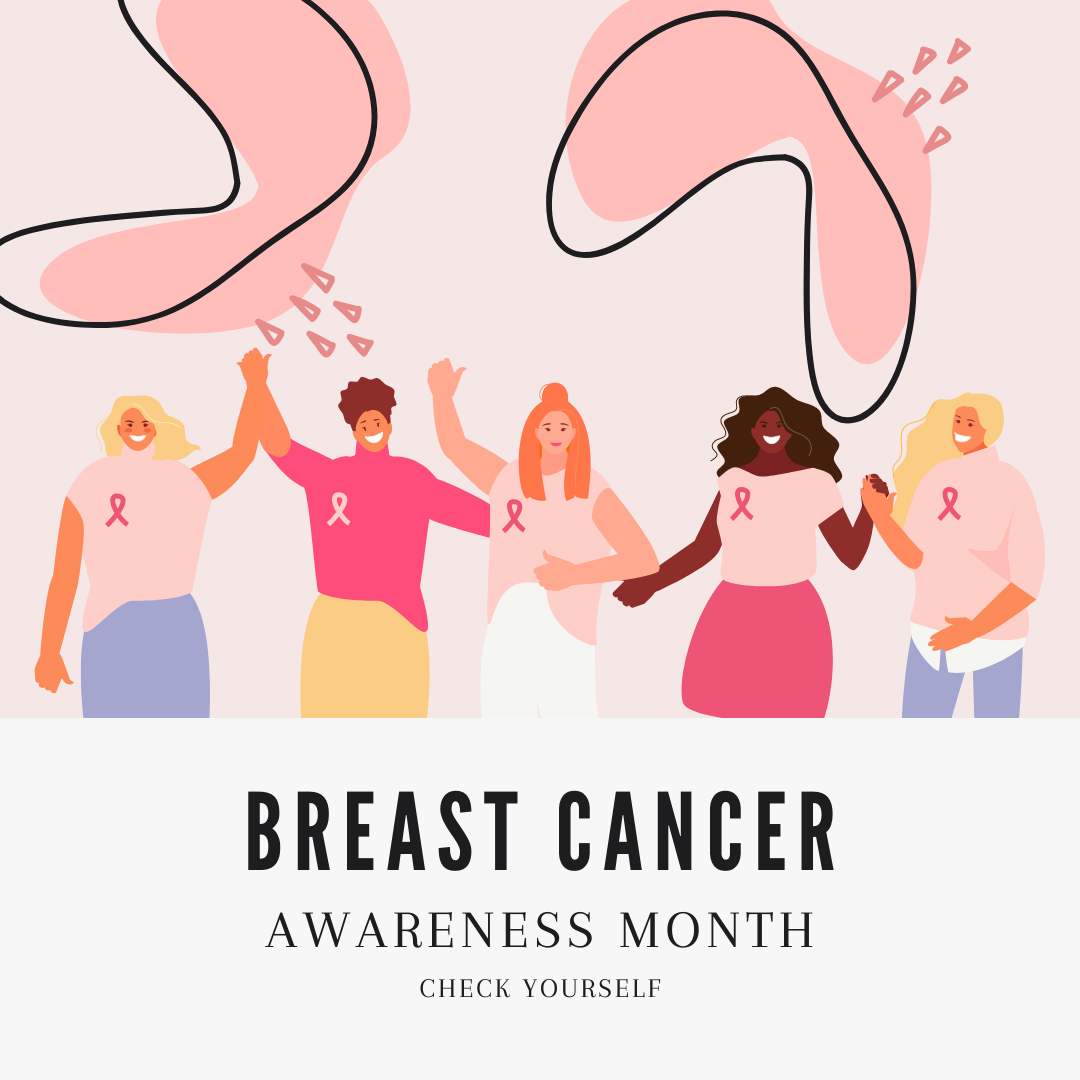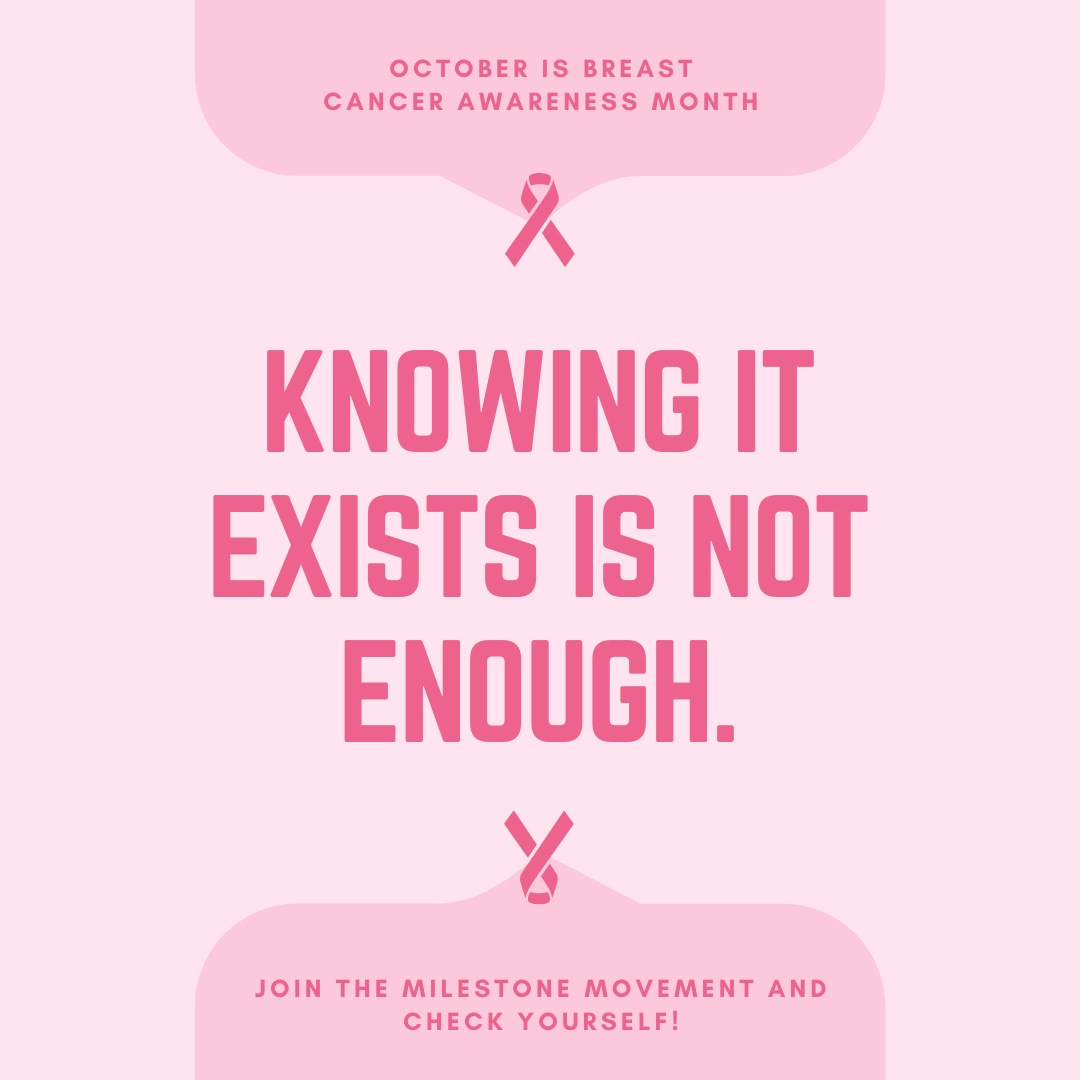October is Breast Cancer Awareness Month

Breast Cancer Awareness Month (BCAM), also referred to in the United States as National Breast Cancer Awareness Month (NBCAM), is an annual international health campaign organized by major breast cancer charities every October to increase awareness of the disease and to raise funds for research into its cause, prevention, diagnosis, treatment and cure.
History of Breast Cancer Awareness Month
NBCAM was founded in 1985 in October as a partnership between the American Cancer Society and the pharmaceutical division of Imperial Chemical Industries (now part of AstraZeneca, producer of several anti-breast cancer drugs). The aim of the NBCAM from the start has been to promote mammography as the most effective weapon in the fight against breast cancer.
In 1993 Evelyn Lauder, Senior Corporate Vice President of the Estée Lauder Companies, founded the Breast Cancer Research Foundation and established the pink ribbon as its symbol, though this was not the first time the ribbon was used to symbolize breast cancer: a 68-year-old California woman named Charlotte Haley, whose sister, daughter, and granddaughter had breast cancer, had distributed peach-color ribbons to call attention to what she perceived as inadequate funding for research. In the fall of 1991, the Susan G. Komen Foundation had handed out pink ribbons to participants in its New York City race for breast cancer survivors.
Activities and Events
A variety of events around the world are organized in October, including walks and runs, and the pink illumination of landmark buildings.
In the United States, the National Football League (NFL) promotes breast cancer awareness by incorporating pink on and off the field, and comic strip artists use pink on one day in October.

10 Tips for Breast Cancer Prevention
-
Avoid becoming overweight. Obesity raises the risk of breast cancer after menopause, the time of life when breast cancer most often occurs. Avoid gaining weight over time, and try to maintain a body-mass index of 25 or less (calculators can be found online).
-
Eat healthy to avoid tipping the scale. Embrace a diet high in vegetables and fruit and low in sugared drinks, refined carbohydrates and fatty foods. Eat lean protein such as fish or chicken breast and eat red meat in moderation, if at all. Eat whole grains. Choose vegetable oils over animal fats.
-
Keep physically active. Research suggests that increased physical activity, even when begun later in life, reduces overall breast-cancer risk by at least 10 percent. All it takes is moderate exercise like a 30-minute walk five days a week to get this protective effect.
-
Drink little or no alcohol. Alcohol use is associated with an increased risk of breast cancer. Women should limit intake to no more than one drink per day, regardless of the type of alcohol.
-
Avoid hormone replacement therapy. Menopausal hormone therapy increases risk for breast cancer. If you must take hormones to manage menopausal symptoms, avoid those that contain progesterone and limit their use to less than three years. “Bioidentical hormones” and hormonal creams and gels are no safer than prescription hormones, and should also be avoided
-
Consider taking an estrogen-blocking medication. Women with a family history of breast cancer or who are over age 60 should talk to their doctor about the pros and cons of estrogen-blocking drugs such as tamoxifen and raloxifene
-
Don’t smoke. Research suggests that long-term smoking is associated with increased risk of breast cancer in some women. Need help quitting? Consider participating in WebQuit, the Hutchinson Center’s online smoking-cessation study.
-
Breast-feed your babies for as long as possible. Women who breast-feed their babies for at least a year in total have a reduced risk of developing breast cancer later.
-
Participate in a research study. The Hutchinson Center is home to several studies that are looking at ways to reduce the risk for breast cancer. Check our website periodically for studies that might be appropriate for you. Just go to www.fhcrc.org and click on “How You Can Help.”
-
Get fit and support breast cancer research at the same time. Regular physical activity is associated with a reduced risk of breast cancer. Ascend some of the world’s most breathtaking peaks while raising vital funds and awareness of breast cancer research by participating in the Hutchinson Center’s annual Climb to Fight Breast Cancer.
Here are some other MileStone blogs that may interest you:


